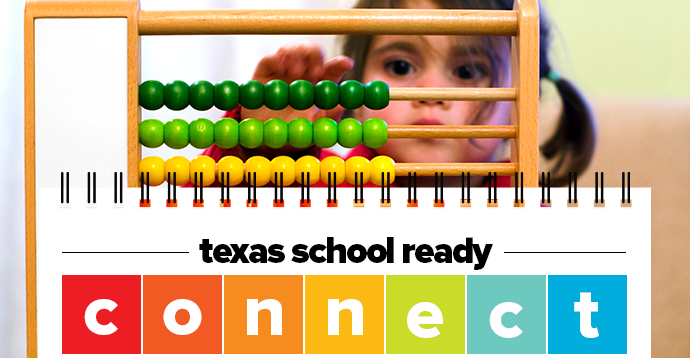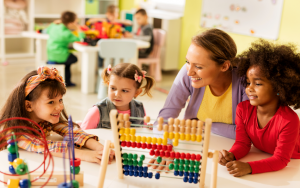A PUBLICATION OF THE CHILDREN'S LEARNING INSTITUTE |
||
 |
||
|
Early Mathematics May 2021 Relevant ResearchWith the growing importance of STEM, recent studies that test the impact of early math curricula show that devoting time to specific math activities as part of the school curriculum is effective in improving children’s math learning before and at the beginning of elementary school. Research evidence also suggests that children’s math achievement when they enter kindergarten can predict later reading achievement; foundational skills in number and operations may set the stage for reading skills (Claessens et al., 2009). Informal Mathematics Young children have the ability to learn mathematical terms and language through everyday experiences. Research indicates that young children have a strong, intuitive understanding of informal mathematics. Toddlers understand the word “more”, enjoy lining up cars into a straight line to create a row, sort their goldfish crackers by color, and learn how to turn a puzzle piece to fit. These are examples of informal math activities that naturally occur in early childhood. In addition, children may use math spontaneously during play with shape recognition, rotation of three dimensional shapes, and manipulating shapes to create structures. These play experiences can help children make strong mathematical connections and knowledge that can provide the right foundation to learn formal math.
Young Children are Natural Learners Teachers should want to offer activities that are playful because young children are natural learners. They are inquisitive, curious, enjoy manipulating items, and experimenting with materials. Renowned Swiss psychologist, Jean Piaget, theorized that the experience creates dissonance, a mental conflict that the child seeks to resolve. As the children resolve their cognitive dissonance, they develop and assimilate their own knowledge. Exposure to math opportunities should occur throughout the day. For example, snack time can provide real world math learning and a chance to practice subitizing. The teacher may spoon a small amount of goldfish crackers on the child’s plate to give them a chance to state how many crackers they see without counting. How to Teach Mathematics Math achievement of young children can be improved by placing more emphasis on math instruction throughout the school day. When early educators understand that young children’s understanding of mathematics is built upon informal knowledge about quantity, then they can observe the children to look for opportunities to build upon that understanding and intentionally create opportunities and activities for children. Adults can use children’s interest in quantity to begin communicating math-related ideas which will help foster children’s growth and interest in math. Our focus should be on helping children learn to problem-solve, ask thoughtful questions, use math language during real life moments, and have hands-on time to use materials throughout the day. Understanding the recommendations on how to teach math can help teachers be more effective in their instruction with the children.
Five Recommendations for Teaching Math to Young Children The Institute of Education Sciences (2013) has provided five recommendations for teaching math with young children that can help provide the essential foundation needed for students’ future success in school, and consider ways to integrate math language and materials into preschool classrooms.
Teachers can help young children with foundational math concepts by providing engaging activities and helping children learn to use problem-solving skills. Building on children’s curiosity and imagination play an important role in mathematical development. Since math skills are used as part of everyday life, we know these are important skills for young children to begin developing. As preschool teachers, you play a critical role in laying the foundation for children’s developing math skills. By providing materials in a math center for children to explore, by infusing math into everyday routines, and by planning focused math lessons, you can help lay the foundation for children’s future success in school and in life! References Claessens, A., Duncan, G. J., & Engel, M. (2009). Kindergarten skills and fifth-grade achievement: Evidence from the ECLS-K. Economics of Education Review, 28(4), 415–427. Institute of Education Sciences, National Center for Education Evaluation and Regional Assistance, What Works Clearinghouse. (2013, November). Teaching Math to Young Children Practice Guide. https://ies.ed.gov/ncee/wwc/Docs/PracticeGuide/early_math_pg_111313.pdf Teaching TipsUsing the Small Grouping Tool We know from research that early identification of learning needs and grouping children according to those needs is known to maximize instructional impact. CLI Engage provides a feature called the Small Grouping Tool that divides children into small groups based on their assessment results. The tool sorts through the assessment results and provides a list of children that have not reached the satisfactory level for each skill. The children grouped by the tool are identified for the teacher as needing more practice with certain skills and would benefit from small group instruction. Teachers can click on the “View Groups” button located on the student assessment screen to see the identified small groups and targeted intervention activities from the CIRCLE Activities Collection. Below is an example of the tool’s automatically selected results.
The links to recommended activities are listed in the “Classroom Activities” section. The text is hyperlinked directly to the CIRCLE Activity Collection to make it easy to access the lessons that target specific skill areas. Another way to add intentionality with children’s learning is to customize new groups to offer more support for them. As you work with the children, you can add observational notes to any group by clicking on the bubble button that will save the notes for future reference. When analyzing your assessment data consider the tools that are available to help you develop a plan for children who are identified as in need of intervention:
Recommended Resources
|
||
|
||||




